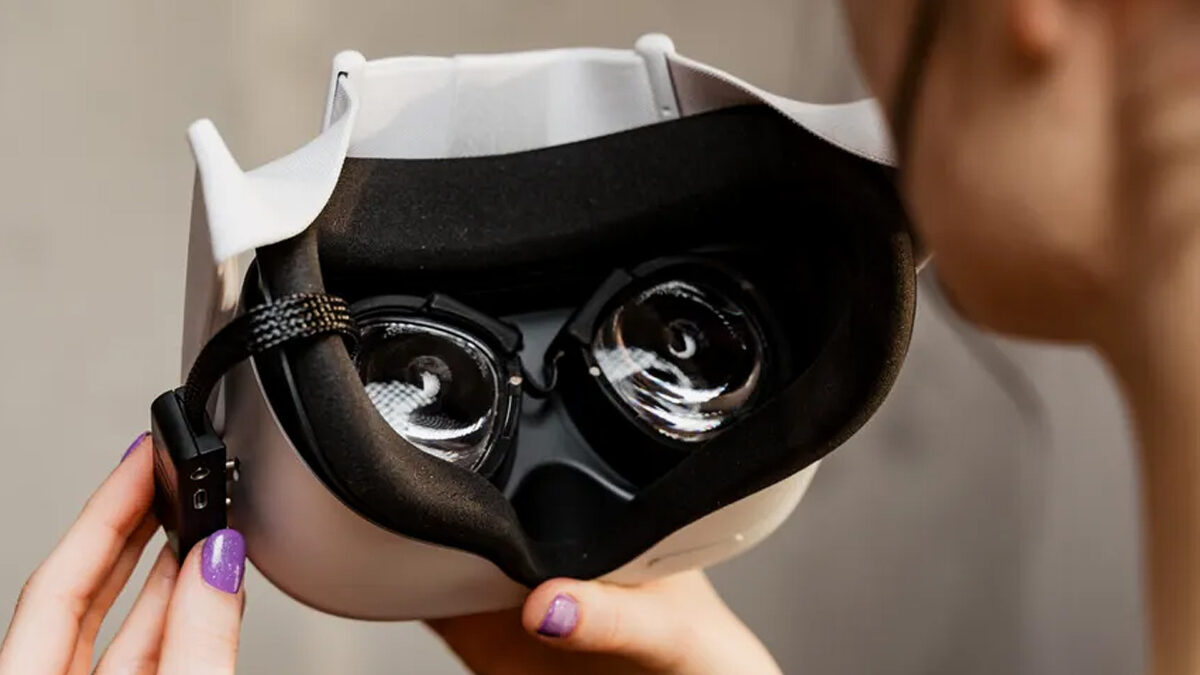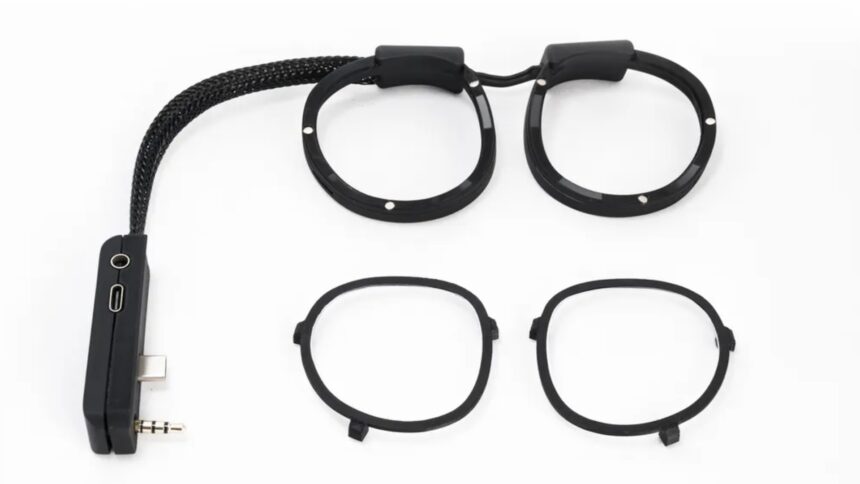This accessory aims to bring eye tracking to Quest

Inseye Lumi is an upgrade module for Quest 2 and 3 that uses a promising new eye tracking technology.
New York-based startup Inseye is developing an upgrade module that adds eye tracking to Quest 3 and 2. The accessory attaches to the lenses and connects to the VR headset via USB-C and the headphone jack.
Inseye Lumi uses a combination of IR emitters and six photosensors that measure the intensity of the light reflected from the eye and analyze it with AI to determine the position of the pupil.

Inseye Lumi with connector and prescription lenses. | Image: Inseye
Conventional eye tracking systems use cameras instead of photo sensors. Inseye's solution is said to have several advantages over camera-based systems: significantly lower power consumption, a very high sampling rate (1000 Hz), and a latency of less than one millisecond. However, the system is slightly less accurate than camera-based eye tracking, which means it is not suitable for all eye tracking applications.
Eyeglass wearers will need to purchase prescription lenses from Inseye. Regular glasses and conventional prescription lenses are not supported.
The startup is targeting a price of $160 for the module. Anyone who makes a refundable deposit of $1 on Prelaunch.com will receive the accessory for $100 when it is released. It is not yet clear when the product will come to market.
Inseye Lumi: only useful for PC VR applications
The upgrade module will primarily benefit PC VR and particularly VRChat users (the company promises VRChat integration). As a standalone headset, Quest will not directly benefit from the accessory unless developers implement support for it in their VR applications.
The exciting question is how well camera-less eye tracking works, as it is more efficient and cheaper to produce than previous solutions
Meta's CTO Andrew Bosworth ruled out an official eye-tracking accessory for Quest, but said that eye tracking would one day be part of the base package of every Quest headset. Until then, however, there are still many hurdles to overcome:
"It [Eye tracking] is just a trade-off on cost and weight and obviously, extra sensors, against the product. So we're really focusing on continuing to be able to deliver it at high degrees of precision in more efficient architectures, both computationally and price standpoint, so we can make it into every single headset," said Bosworth.
Note: Links to online stores in articles can be so-called affiliate links. If you buy through this link, MIXED receives a commission from the provider. For you the price does not change.